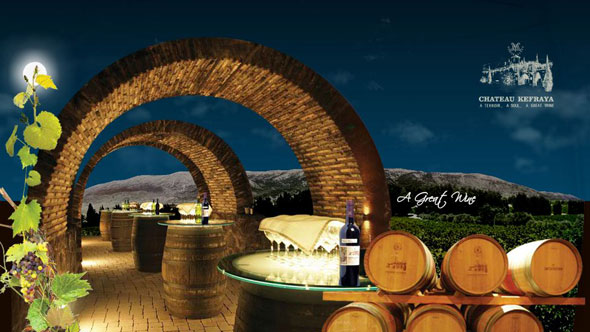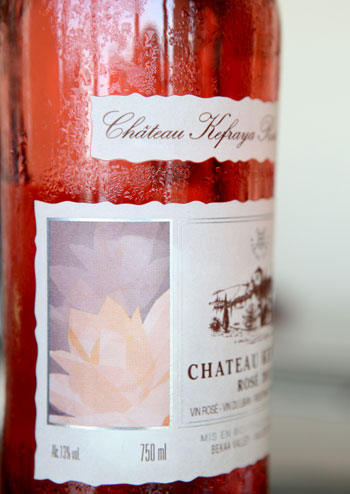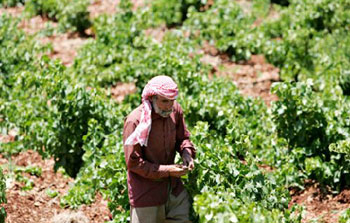Best Lebanese Wine Producers Discuss “Wines of Lebanon”
Marcopolis took a closer look at one of Lebanon’s finest export goods – wines of Lebanon.

Best Lebanese Wine Producers Discuss “Wines of Lebanon”
Marcopolis took a look at one of Lebanon’s finest export goods – wines of Lebanon. With commentaries from the best Lebanese wine producers.
Many visitors to the tiny Middle Eastern state are surprised when they study the menu in Beirut to find wine labeled as a “Proud Product of Lebanon”.
The country’s passion for wine reminds visitors that Lebanon is a religiously mixed country, being home to 18 different religions and ethnic backgrounds. Christians make up to 40% of the population and according to the constitution, the President of the Arab Republic must be a Christian Maronite.
“Whenever the number of Lebanese wineries increases, especially when quality wine is being produced, it reinforces the idea that Lebanon has become a wine-producing country,” said Emile Majdalani, Commercial Director of Lebanon’s second largest wine producer, Château Kefraya.
Alcoholic beverages from the Levant were already en vogue during the Roman Empire. In the last century, wine and viniculture received a boost from French wine dynasties, which expanded into Lebanon after the end of the 400-year long Ottoman occupation.
Its challenger, Château Ksara, is the largest wine firm of distinction, controlling 70% of the domestic wine production. “We are number one on the Lebanese market and we intend to keep this position. Regarding exports, our figures show that 39% of Lebanese export is our share, which means we are also number one on the export market,” said Elie Maamari, Oenologist, Export Manager and International Wine Juror at Château Ksara.
With new market participants entering the sector, however, the days when a few wineries could spread their wings with no limits are definitely over. “In Lebanon, we used to have 3 to 5 producers over the past 40 years and up until the mid 90´s,” Gaston Hochar, Director of Château Musar, explained. He added that “from the mid 90´s onwards, there was a certain number of companies who started producing wines. In 2005-2006, there were nearly 15 to 20 wineries, and in the last 3 to 5 years there have been several newcomers, so today we are approximately 30 to 35 producers in Lebanon, which makes a lot of newcomers to the world of wine, a lot of new products on the market, a lot of competition and a lot of different products, types and blends for the customer to choose from.”
Ancient roots of high quality and richness
Alcoholic beverages from the Levant were already en vogue during the Roman Empire. In the last century, wine and viniculture received a boost from French wine dynasties, which expanded into Lebanon after the end of the 400-year long Ottoman occupation.
“We found grottos in which the Romans used to bury their soldiers and we have a beautiful view of the vineyards at 1,100 meters above sea level,” Mr. Michel de Bustros recalled. “We have six gardens and parks that bear the names of composers,” and these have become popular visiting sites for tourists. “You can enjoy a whole day at Château Kefraya where you can visit the winery and the museum, have lunch, taste the wines and enjoy the parks,” de Bustros told Marcopolis.
Château Kefraya’s early years were affected by the civil war. “Château Kefraya started in 1979, during the so-called civil war (which started in 1975), which meant there was nothing that stopped us from developing the project we had created. We managed to continue year after year. The winery was created in 1979 but it has been expanded four or five times since then,” said the firm’s founder Michel de Bustros.
With their feeling for good taste and world class hospitality, Lebanese wine companies do not want to be branded the Coca-Cola of alcoholic acid liquids. Michel de Bustros stressed that “we try to emphasize the high quality and richness of our wines but it is not very easy because usually people are looking for inexpensive wines.”
The culture of enjoying a good glass of wine or two has become so successful in recent years that exporting Lebanon’s noble liquid to the world is high on the agenda. Placing orders online is popular among connoisseurs. The age of the internet has opened doors to new markets – but also it has created a tough market environment.
Hopes and fears
“In fact, it‘s getting more difficult for all the wine producers around the world: competitiveness is increasing and there have been a lot of wineries in recent years that have probably closed their doors,” Hochar from Château Musar confirmed. “With Musar we are still steady, increasing slightly in some countries, and so this allows us to continue on our own path and with our marketing strategy to, like I said earlier, continue making things as different as possible so people will recognise the uniqueness of types and blends and if they want something different to just a normal wine, they will pick Musar.”
At Château Kefraya, however, the management is well aware of the fact that dreams of serving the world have their limits. “We are not trying to develop in China at the moment,” said Château Kefraya’s Commercial Director Emile Majdalani.
“The export strategy is to have Chateau Kefraya everywhere and have quality in the demand. What I mean by that is that Chateau Kefraya has a limited production and we cannot afford to distribute on a massive scale.”
Château Ksara’s Export Manager Elie Maamari is more bullish on Asia. “The aim for 2012 is indeed to penetrate the Asian market. We are already present in Japan but it is a shy presence. China, of course, is one main target, however for the time being our presence in China is quite reserved. French and Italian wines are very well-known there, but Lebanese wine is not so present yet.”
Mamaari even sees a market in two countries that are more famous for vodka and beer. “The Russian market is another target. We have a very good presence in Belarussia, which is a neighbour to the Russian market. The most promising market is the US market.”
“Hello, neighbor!”
Lebanon, with its huge container port in Beirut that is one of the largest in the Eastern Mediterranean, has always benefited from its close proximity to Europe. Where there is light, there is shadow. “Wines from Europe are entering Lebanon with fewer customs taxes ever year and this will soon be down to zero. This creates a very competitive environment,” Majdalani explained. As far as Château Kefraya is concerned, “At the same time we have an advantage in the export market compared to Europe because we will reciprocally have to pay fewer customs to enter those markets. But in Lebanon it will be challenging.
Château Musar’s Hochar said that “in Lebanon, the biggest challenge is Lebanon itself as a whole – the instability and the uncertainty factor.”
Regarding current events in Syria, Hochar has no illusions about the ongoing challenges. “From 2011 onward, there was some political and social unrest that started to develop in the region, in the Middle East, and a certain political unrest in Lebanon as well, which meant that tourism started to drop. Now with the big events happening in the region, I think tourism is probably slowing down a little bit, unfortunately, unlike the trend we saw over the past 5 years, and where we thought it would continue increasing.”
Patterns and trends
Maamari pointed out that Château Ksara “is far from struggling,” but the winery struggles with “hurdles which many companies would like to have. ” Our problem is that we run out of stock quickly. However the Lebanese wine market is booming year after year.”
For de Bustros, the ups and downs are part of any businessman’s life. “At Château Kefraya, we have been facing challenges ever since we began – every day is a challenge. Right now there are about thirty or thirty-five wineries in the local market, so it is a challenge, but we are finding success.”
Despite all challenges, Lebanon’s wineries embrace new trends in the world of transforming grapes into red and white wines. “There is a trend in the industry for two things: one for biodynamic wines and one for organic wines,” Gaston Hochar explained.
“‘Biodynamic is something that is very specific and ‘organic’ is something also quite different; our vineyards are certified organic so I can say we tend to follow the natural path, and we had this certificate issued for the last 5 years, but I tend to prefer the term natural wines to organic wines.”
For de Bustros, the outcome of the battle between “red or white” type (which are also the dominant colors of the Lebanese flag) is clear. “The current trend is for white wines, which are being increasingly appreciated by consumers. Therefore we are planting for a greater variety of white wines.”

